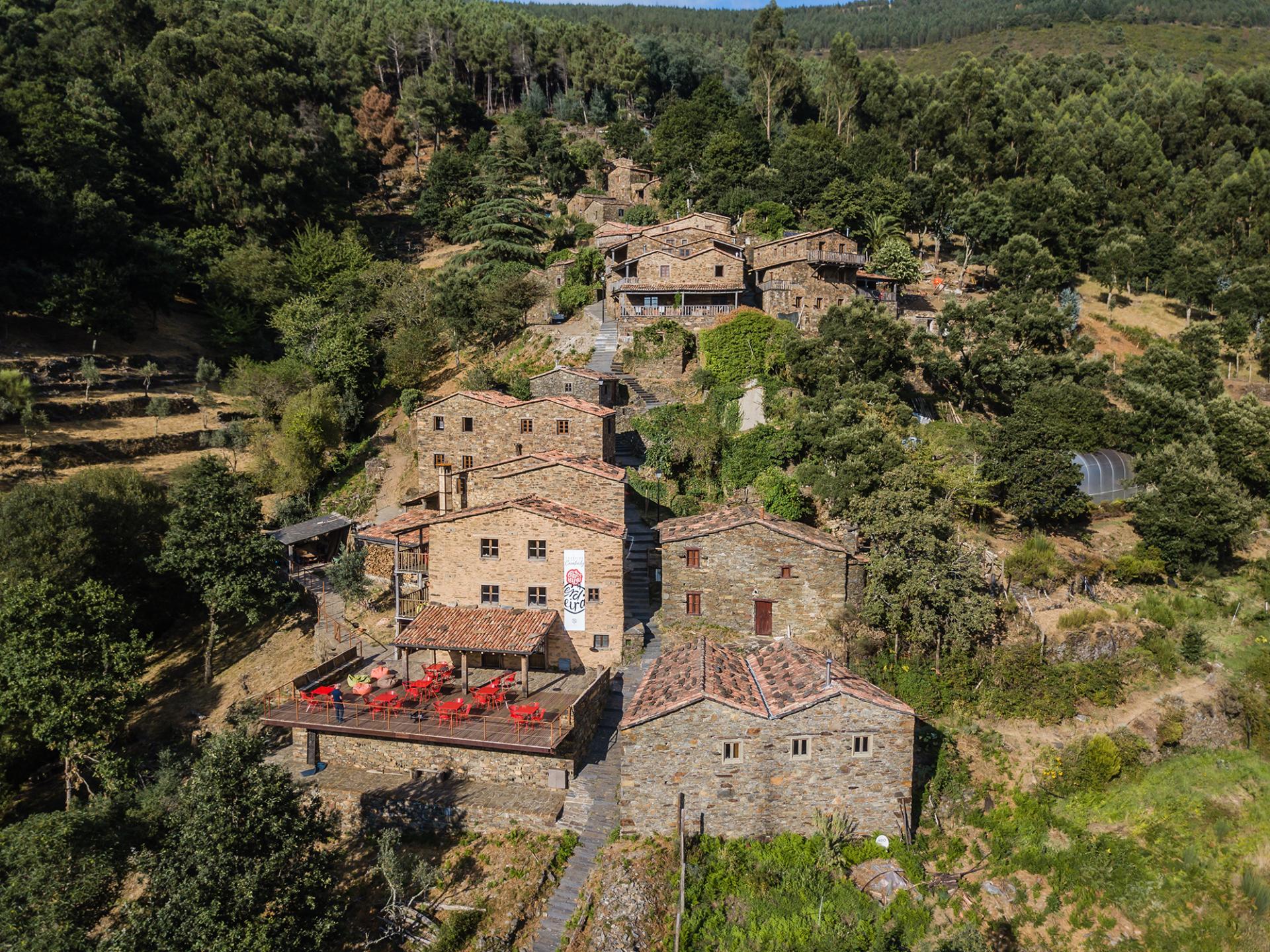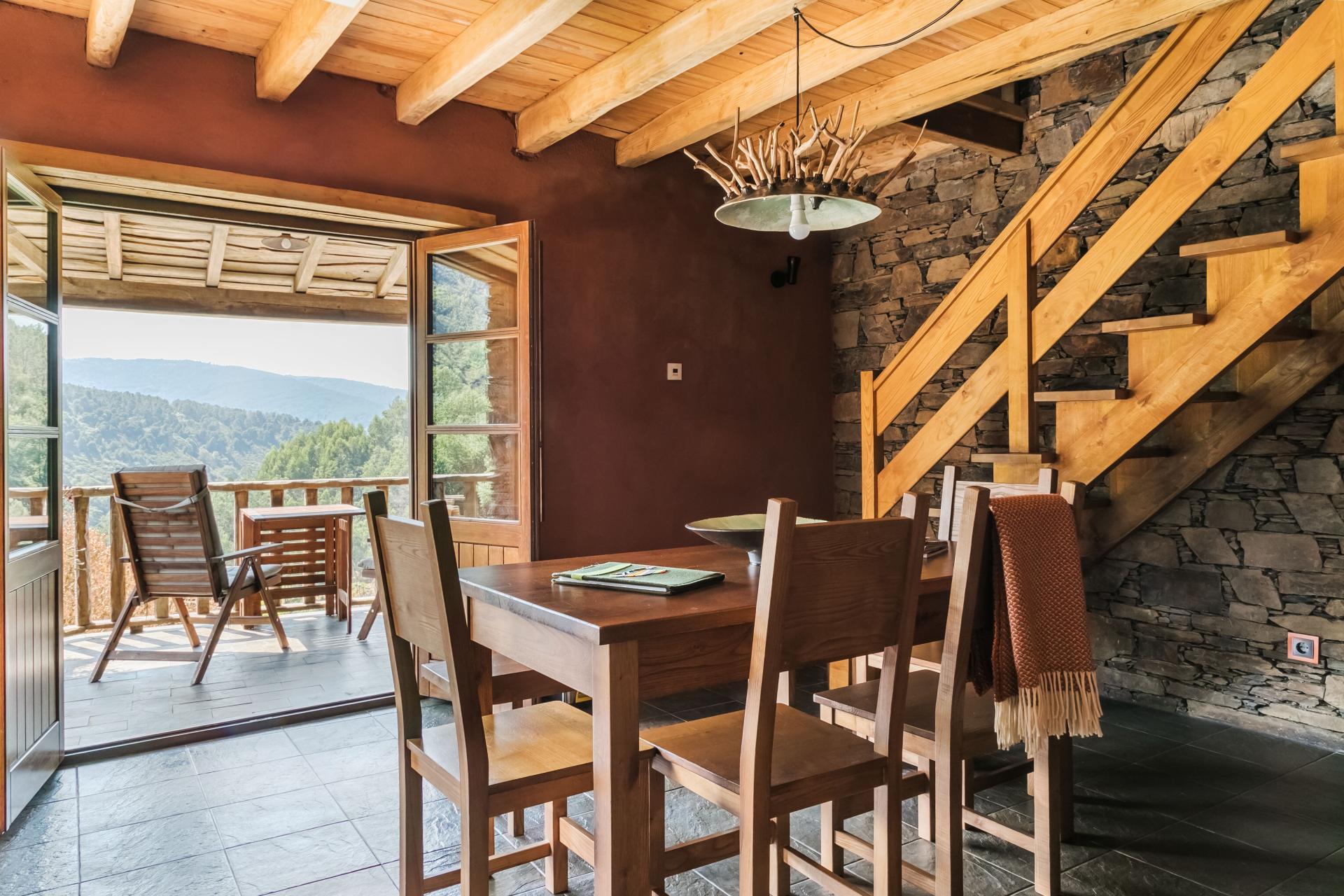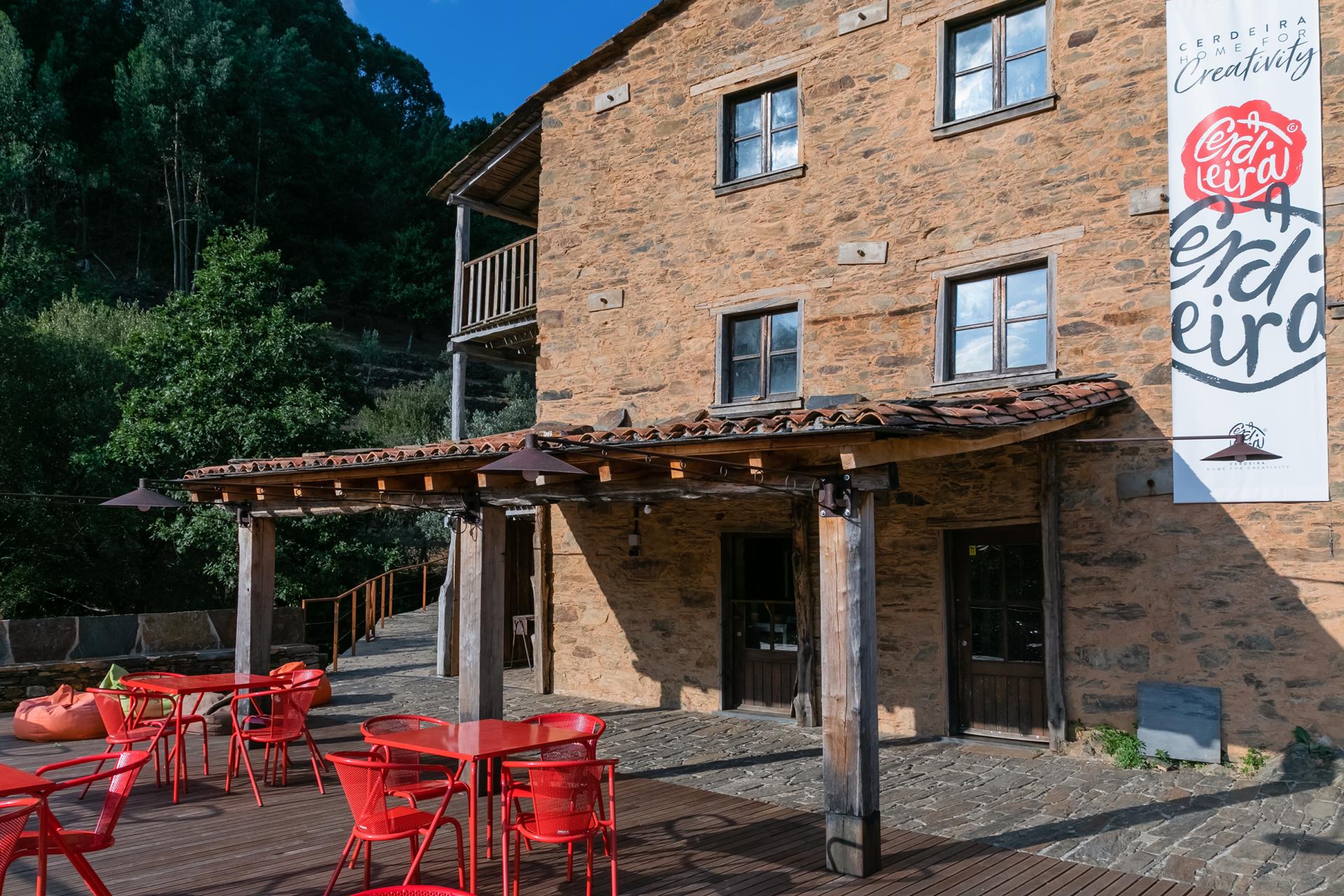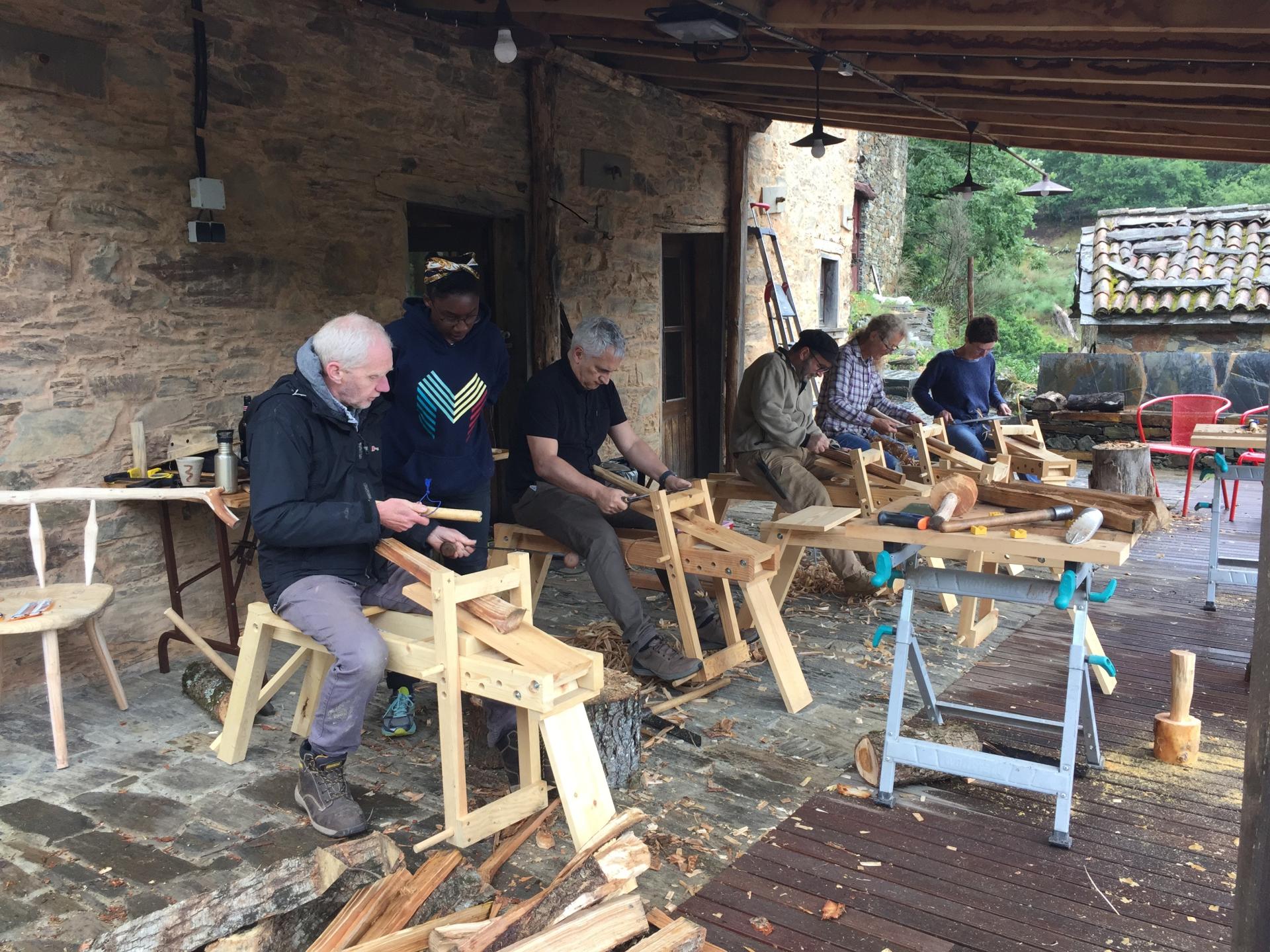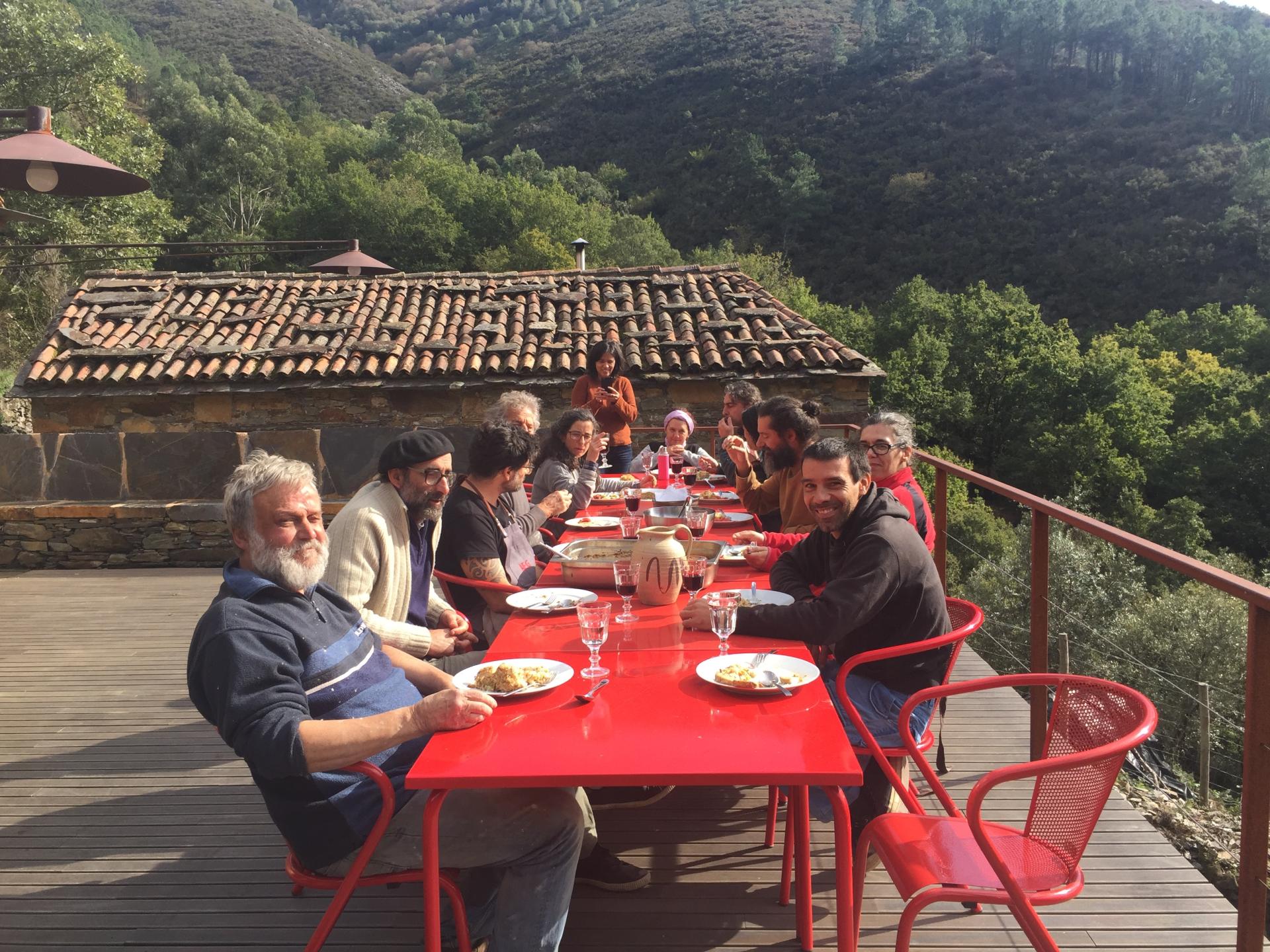Home for Creativity
Basic information
Project Title
Full project title
Category
Project Description
Cerdeira - Home for Creativity is a community of arts where creativity and nature serves all purposes: to rest, learn, create and inspire. This community has a village as home and the world as inspiration. Here, creativity is combined with ecological sustainability and social responsibility, applied not only to the rehabilitation of schist houses, classified heritage, but also to the activities around art and creativity that we use as a means of connecting with the local community.
Geographical Scope
Project Region
Urban or rural issues
Physical or other transformations
EU Programme or fund
Which funds
Description of the project
Summary
Hidden away in a small valley at 700m above sea level, Cerdeira was a village of schist houses at risk of disappearing after agricultural activity was abandoned in the middle of the 20th Century. Today, Cerdeira has new stories to tell of new habitants who have, with their persistence and will power, breathed life and purpose back into this place. The houses of the village were recovered by local builders, using mainly local materials. The innovation in the reconstruction process followed the values of ecological constructions through the choice and use of sustainable products, but also promoted ecological solutions to the future maintenance and experience of these houses, by using recycled and/or biological detergents and consumables.
The recovery of the village wasn't done only by reconstructing it. Innovative ideas were implemented to adapt the village to the present day without losing its history and culture, as improving its access while preserving the place where it is located; giving comfort to their houses without altering their traditional image and beauty, and using aesthetics and art as an attraction but also part of the village's sustainability in the future.
Cerdeira is currently occupied by the men and women who have knowledgeably restored the houses and made them comfortable; by guests who choose the village to spend their holidays and/or to learn something new, and by artists who come from all over the world in search of inspiration.
The Arts & Crafts school also give life to the village, promoting courses and masterclasses on ceramic, wood and other arts, and implementing a culture of using local materials, some collected in the nature that surrounds the village, and used in the courses and art works whenever possible. These courses bring together people from all backgrounds, through an artistic experience of sharing and learning.
Key objectives for sustainability
Sustainability, social responsibility and impact on the local economy have been the guidelines for implementing this project.
The classified architectural heritage has been rebuilt by local builders, using mainly local materials. It served as a "school" for bricklayers to train and learn to make walls from shist stone. The building company took the opportunity to specialize and is now the most required company in terms of shist buildings at a national level.
All furniture and woodwork, as doors and windows, were made by a local carpentry. We successfully challenged them to produce all items in local chestnut wood.
Since the main threats are the loss of inhabitants due to the lack of employment and opportunities, the impact in this rural area has been important. Not only through the rebuilding of 17 houses, but especially by creating 14 jobs with permanent contracts, with 90% employes from the surrounding areas.
Innovation in the rebuilding process followed the values of ecological constructions through the choice of new products like non-toxic treatments, cork insulation, low energy equipment and partially solar generated energy. Everyday life also has ecological solutions - all detergents and consumables are biological or recycled.
We also challenged 12 artists to intervene in the houses, working in different aspects of the place with a contemporary language.
In our main focus - Arts&Crafts, which promotes courses and masterclasses on ceramic, wood and other arts, we implemented a culture of using local materials for the courses and art work whenever possible.
We are continuously researching on ceramic materials and local wood to use in various aspects of our project. An example is the tableware that we made to use in Cerdeira.
Key objectives for aesthetics and quality
When creating a concept on rehabilitation of constructed heritage, aesthetic aspects are a key issue. It would be easy just to follow the historical data and build as it was before. The result would be beautiful like a museum, but not a place to live and work adapted to modern life requirements. Our aim was to give back life to the place, a new meaning and reason to survive. How to rebuild heritage and introduce new aspects that make houses comfortable and a desirable stay?
Our answer was through the simplicity, for which these houses stand for; excellent craftmanship and local materials. An example is furniture with longlasting and simple functional aspects, designed and made by local carpenters from chestnutwood. The interior of the small houses gained extension with open spaces and staircases. Interior walls made from clay and stone, wooden floors, earthen colors, perfectly integrated in the nature landscape. In the idea of William Morris:“Have nothing in your houses that you do not know to be useful or believe to be beautiful.”
The result are comfortable and functional houses with all requirements of modern life, keeping the simplicity and beauty of the rural context. They are also enriched by the intervention of 12 portuguese artists/crafters, who were asked to make a contemporary interpretation of the place, each one in it's language, from ceramics to woodsculpture, textile or portuguese tiles painting. Each house gained a very special meaning, communicating heritage, history and culture of the village to those who stay inside and experience Cerdeira.
The guests connect to the local nature, culture and arts; maybe with art that they're learning in one of our courses.
One of our aims is to support portuguese craftmanship. While in former days their work was a required part of every new public building or home, today it is unfortunately very rare. Most are substituted by industrial decoration, many times meaningless or no more than that. Let's turn the page!
Key objectives for inclusion
Different aspects of the project favor different kinds of inclusion.
The start for the whole project has been the event "Elementos à Solta - Art meets Nature". This is an encounter of arts and artists to make an annual exhibition in Cerdeira since 2006. This event gives voice to the artists, is enriched by their ideas, proposals and interventions, bringing together arts and crafts, theater, musicians, interactive installations and workshops. All people, from local communities to travelers, are invited to come and discover the village, with free access to shows and exhibitions that are part of a multidisciplinary program.
Regarding accommodation, as mentioned before, the entire reconstruction of the village was carried out using local companies and workers, boosting the local economy and helping to reduce the inequality of opportunities for those who choose to live in the countryside. Besides, for those who visit and stay, our key is hospitality, which means that all guests and artists are received as friends. Our staff is trained to help and take good care of everyone, including guests with disabilities, as one of the houses is prepared to welcome people with reduced mobility. We also have several types of accommodation with different and affordable prices.
Since the beginning we have designed a program to our Arts & Crafts School for all those who are interested in learning, with or without experience. We want to promote equal opportunities for knowledge, so we have artistic programs for all ages, beginners and professionals, some specially designed for families. They all learn from professional artists and masters, who generously come to Cerdeira to share their know-how.
Some of the artistic practices taught in Cerdeira are also on the verge of extinction, depending on this sharing to survive.
Results in relation to category
From a village in danger of disappearing, with no infrastructure at all, Cerdeira jumped to the 21st century, keeping its simplicity and highlighting its culture, but fulfilling all requirements of a modern life, and more than that, with ecological concerns, excelent quality of buildings and equipments, as key values social and environmental responsability, it is build for the future.
From former inhabitants to people from all over the world, each of them feels involved in the culture of the place, feels confortable and welcome. They feel nature's generosity and the history of Cerdeira. They identify easily with the aims of the project. They belong to the place, even if for only one or two weeks, sharing experiences, knowledge and making friends.
Our team, the artists and teachers created family like relationship, support each other in the best way they can.
The sense of belonging is made by all this, based on common values that turned a touchable reality.
How Citizens benefit
This project has been supported by the local government, through the municipality of Lousã, and is also integrated in the network of "Aldeias do Xisto", which consists in 27 schist villages distributed throughout the interior of the Central Region of Portugal.
These partnerships also make it possible to link this village to its regional context, attracting the local community that lives close to the village but also people from all over the country and the world, who want to discover this region and its tourist potential reflected in architecture, environmental amenities, gastronomy and traditions, among other distinctive cultural elements presented in products and services of excellence.
We've done this project involving as many people as possible, at the local level, especially in the work of rebuilding the houses and creating local jobs. The building company who took the opportunity to specialize while rebuilding the village, is currently the most required company in terms of shist buildings at a national level.
We've also been supporting portuguese craftsmanship by asking for an intervention of 12 portuguese artists/crafters on each house, to make a contemporary interpretation in it's aesthetic and artistic language, from ceramics to woodsculpture, textile or portuguese tiles painting.
The main benefit for the rural population is not only about employment and investments, it is the change of the mindset about rural areas. Always connected to economic difficulties and discomfort, the project has proved that the villages are valuable alternatives for a contemporary way of life - not bringing the city to the countryside but enhance the good sides rural settings have.
Physical or other transformations
Innovative character
When it comes to rehabilitation of heritage, normally there are to ways that are adopted. One restores the buildings creating a museum like situation, the other option is many times rebuilding for large scale tourism, both results are beautyful but not sustainable. The first one will live on subsidies, the second option looses the contact to the place and to its inhabitants.
Our project combines culture as a meaning and tourism as source of income. The difference is that all get involved with the project, the guests and the local people through workshops and other experiences.
The team works in the project not to "serve" tourism but to share their experience in arts or hiking because they get involved themselves with the arts program, participating on workshops and firings, promoting already small workshops ("Creative Experiences program") on their own. From time to time everybody has the oportunity to try the potters wheel, or bring their children to do so.
A small project, but even though all our collaborators have a permanent contract, that is a real economic challenge. It is important to guarantee stability for the people who work with us.
Another important aspect are the resources, materials for ceramics, woodworking etc. used for our products and in our courses. After doing and continuing research on local materials we are able to prepare and work with regional raw materials, as a special way of connecting to the place and a completely unique way of artistic expression.
Learning transferred to other parties
Culture and Creative Tourism as a strategie for rural development to revive the mountain village Cerdeira, a challenge to fix new population and to achieve economic and ecological sustainability . Even though rural depopulations is a global phenomenon, it’s development has been particularly rampant in Portugal. This problem affects especially mountain areas, and the place our project focuses on is an expressiv example of that reality. Cultural Tourism has fundamental impacts on: Heritage as it allows to preserve arquitecture, grants it with new meanings and helps to revive ancient craft tecniques. For Artists brings new oportunities for their work like teaching, developing new products and diversified cultural life.
Guests benefit from new experiences and personal enrichment, get a deeper understanding of the region they visit and go home with new capabilities. For the Region and the population it brings interested visitors (no mass tourism) and longer stay, it builds a new awareness to value the own culture. It creates economical oportunities and cultural diversity, bring new population. Creative tourism could be a most important tool to stop rural depopulation, to diversify cultural life in rural areas, to bring prosperity to remote places, although there is a clear need to study impact, for not to destroy peoples places by affluence and influence of tourism and economic interests. Keep it small!

